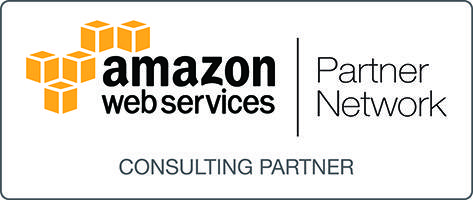SUSTAINABILITY
WHAT DOES THAT MEAN?
Every organization have their own organizational sustainability and the role that human resources professionals can play in creating sustainability in multinational, medium, small, or up-coming organizations. The strategic focus of the sustainability literature has meant practical, operational level human resources advice has been overlooked. We address that gap by providing practical activities on one aspect of sustainable human resources for our organization.
We address recruitment and selection, from job advertisements through to interviews and beyond. Recruitment and selection practices requiring whole-of-organization approaches as well as micro sustainability practices are included to address both radical and incremental change programs. Around the ages specific environmental, economic, and social sustainability practices in recruitment and selection are presented. A prioritized top ten list of practices is recommended for immediate implementation.
Recruiting is all about:
Attract
Select
Retain
Motivate
The Right Talents
What makes your company attractive today?
Credibility
- Communications are open and accessible.
- Competence in coordinating human and material resources.
- Integrity in carrying out vision with consistency.
Respect
- Supporting professional development and showing appreciation.
- Collaborating with employees on relevant decisions.
- Caring for employees as individuals with personal lives.
Fairness
- Equity – balanced treatment for all in terms of rewards.
- Impartiality – Absence of favoritism in hiring and promotion.
- Justice – Lack of discrimination and process of appeals.
Pride
- In personal job, individual contributions.
- In work produced by one man& team or work group.
- In the organization’s products and standing in the community.
Camaraderie
- Ability to be oneself.
- Socially friendly and welcoming atmosphere.
- Sense of & family & or &team.
Beyond reviewing the sustainability, human resources and recruitment and selection literature, we held extensive discussions with our teams and conducted a workshop with experts in sustainability, human resources and recruitment and selection. A matrix was created to categorize the sustainability practices uncovered in the review. We represent sustainability practices in each of ten domains of recruitment and selection activity. Each domain includes examples of practices that could be regarded as support for the “triple bottom line” goals of economic, environmental, or social/societal sustainability. Despite these labels, however, the suggested practices are less clear, as the practices overlap and at times have a broader impact than the heading may imply.
Drag & Drop
Paperless Processes.
We use technology to reduce the paperwork is probably the most obvious environmentally preferable practice. Recruitment-related activities now frequently conducted electronically include advertising vacancies, receiving, and distributing applicant resumes, reference checks, letters of offer and employment contracts. Many induction processes are online, web-based, or
otherwise electronically managed.


Technology To Reduce Travel.
Technology to reduce travel. The need for interviewers and interviewees to meet in person is changing as technology allows for improved remote communication. Whether the two parties are located across the city, the country or are spread internationally, technology such as teleconferencing, videoconferencing and VOIP calls mean high quality discussions may be conducted without the environmental costs of air and motor vehicle travel. Webcam-enabled. The number of in-person interviews may be reduced by introducing at least some electronic interviews.
Green Interviews.
The interview setting and way in which it is conducted will create a strong impression on candidates and contribute to the psychological contract of the newly hired employee.
Reusable crockery, direct keyboard entry and an interview environment that demonstrates sustainability practices demonstrates leadership by the recruitment team, gives an important impression to the candidate and sets the tone for later employment.


Recruitment from within.
Creating an organization that develops its own employees not only provides increased opportunities for personal growth but also is more likely to become an employer of choice, more easily able to attract high quality applicants and retain high quality employees.
Incorporating sustainability into job design
As safety was once ignored in favor of gaining increased productivity, so too has sustainability not been included as a core value in many organizations. Having sustainability practices incorporated into an organization’s job description template means every job is evaluated for relevant sustainability practices. Reviews of job descriptions, whether routinely scheduled, annually, at vacancy or at performance review time would document the specific sustainability practices relating to each job.


Sustainability competencies.
Many organizations are recruiting or selecting people who will be sustainability champions in their organization, yet the managers and recruiters themselves are not aware of the technical skills they are seeking. Beyond specific education requirements and research, communication, organizational change, and political skills needed for such roles, consultants are likely to recommend selection criteria for these positions to include awareness and understanding of sustainability. This may take the form of either formal work positions, sustainability components of a position, or
participation in local community as a volunteer. Sustainability may also form part of an employee’s responsibilities. Volunteering in community-based programs such as social responsibility in schools or orphanages regeneration is an example of an employee’s commitment to the principles of sustainability. Whether reference checks are conducted internally or externally, when sustainability is an important and stated consideration for a new hire, include the checking of the candidate’s claims of sustainable practices in the reference check.
Flexibility to encourage applicant diversity.
A full range of potential applicants is less likely if interviews are conducted only in business hours. Consider the needs of potential older, distant, caring, handicapped or social workers who are economically poor and ensure job advertisements are appropriately written and placed to appeal to the diverse range of applicants – then offer flexibility in timing for in-person attendances.


Community engagement
Consider the reach of your organization into the community, but not just for future applicants. Consider what good your organization can do for a community, near or far, including through existing community engagement or partnership programs.
Induction demonstrates sustainability.
When a new employee is inducted into the organization, use best sustainability practices to showcase the organization’s expectations of all employees and to demonstrate leadership in the organization’s commitment to sustainability.


Monitor and report sustainability targets.
Create, monitor, and report on selected sustainability practices targets for recruitment and selection in the organization’s existing sustainability reporting mechanisms. Whether incremental or radical change is sought, measurement provides the opportunity to assess the status, evaluate progress and review the merits of a sustainability program.
Assumptions and limitations
Recommendations are relatively easy to make but it is somewhat more complex to implement them.
Technology – a “solution” raised as a priority in this paper – is not just an asset but a liability also. We recognize the tradeoff for many organizations in adopting a technology solution that allows reductions in paperwork, travel, and other resource strain. The cost of technology, although more affordable than ever, may be bittersweet when organizations are under financial strain, when margins are slim and corporate belts are being tightened. The cost to purchase and maintain hardware and software, user training and technical support can be prohibitive for many organizations.

Yet, to be truly sustainable, assessors need electronic pads for recording at assessment centers, recruiters need quiet keyboards for interview or telephone reference checking note taking. Recruiters need large screens to enable onscreen reading of job applications, psychometric reports, and assessment matrixes. Employees need the facilities, technology, and support to enable at-home, telecommuting or remote work that is as fast and effective as office-based work.
The “technology solution” to sustainable recruitment also supposes that e-recruitment suits all organizations. The use of technology may be a hindrance to those organization’s with recruitment needs. Consider, for example, those new, innovative, or small organization’s for which e-literacy is not a priority. Consider those potential employees who may be precluded from an online recruitment process because of the nature of their work or other circumstances. A completely online solution is unworkable for many organizations and limiting for many others. Providing a range of application avenues will often be a premium solution.
There are other skills beyond those listed in this study that are needed in an organization. For example, the skills of sustainability assessment, accreditation and accounting are needed in the human resources team. We know, too, that the culture of an organization will be a major obstacle to implementing the activities listed here. The strength and power of the existing culture may preclude all but the smallest steps towards personal leadership in sustainable practices. There are many situations in which incremental change is better than no change at all, coupled with the hope that one day radical change will occur.
The potential human cost, however, of not implementing sustainable business practices is urgent.
Recruiters have a unique opportunity to convey the organization’s sustainability goals in person to a large audience of potential employees. Our in-person demonstration of the organization’s values is likely to reinforce new employees’ commitment to sustainability and will enhance the organization’s sustainability reputation in those who are not selected. Recruiters can set up a personal sustainability dialogue between the organization and each individual as they approach the organization.
We had addressed the recruitment and selection practices likely to lead our workspace as more sustainable organization and complement existing sustainability practices. We hope and expect that we will fill the gaps we have left in this first attempt. Future research could address the sustainable practices inherent not just in workforce planning and induction areas briefly touched in our company but extend the operationalization of sustainability practices into the areas of compensation and benefits, learning and development and performance management.
Conclusion
We have demonstrated that applying sustainability to recruitment and selection techniques has been a missing link in corporate/medium or small sustainability firms. By providing practical tools that human resources practitioners can apply in everyday recruitment and selection processes we have shown that the implementation and practice of sustainability is often easily accessible.
People are said to be an organization’s most valuable resource. What better way to engage potential employees with sustainability but to commence their sustainability experience when they consider a potential employer. By showcasing our organization’s commitment to sustainability in recruitment and selection from inception, potential new employees are encouraged to embrace the vision of the organization and commit to a long term future with both human resources to role model sustainability across the organization and transfer practices into other functional areas. The value of these sustainability practices is that strong sustainability cultural values have been communicated from the start and employees have aligned expectations and an unbroken psychological contract with the organization.
Our team responded to the call for increased attention to human sustainability, we focused on specific practices such as those identified in our recruitment and selection. This function will enable every human resource team member to know what they can do personally and professionally to support their organization in sustainable practices. Human resources sustainability in recruitment and selection is not only sustainable, but invaluable.



